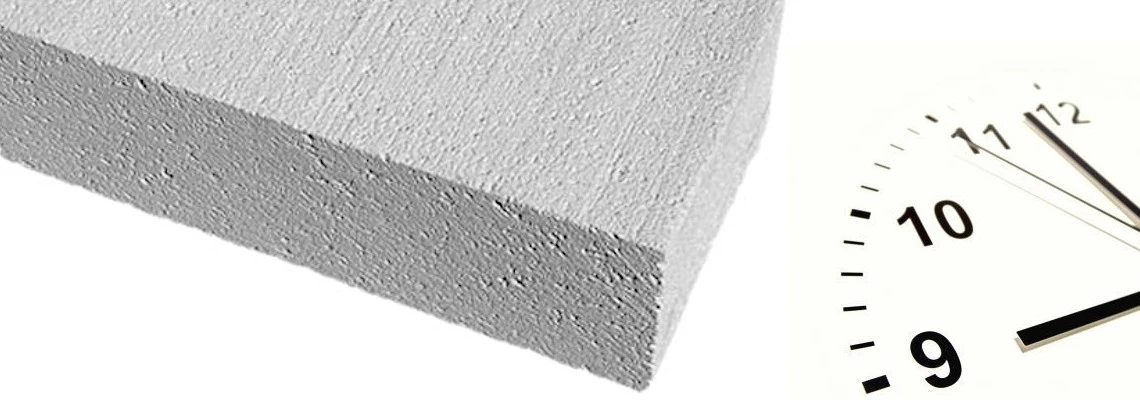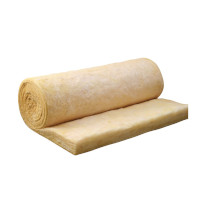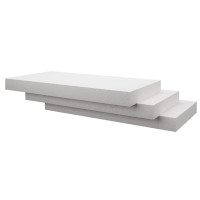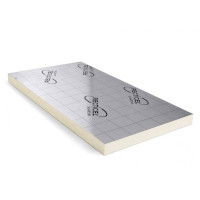
WHAT IS THE EASIEST INSULATION TO INSTALL?
Insulating your home is a fantastic financial move. It not only enhances your comfort but also saves you a significant amount of money in the long run. However, not all insulation types are straightforward to install. Some are user-friendly, while others can be quite challenging during installation.
If you're reading this article, chances are you're seeking ways to avoid expenses linked to installing thermal insulation and are searching for the easiest installation methods.
This article aims to shed light on the insulation types that are easier for DIY installation and those that are better left to experienced professionals.
DEFINING FEATURES OF INSULATION FOR EASY INSTALLATION
To classify thermal insulation as easy to install, certain characteristics must define that specific type of insulation falling under the category of easy installation.
Thermal insulation that is easy to install should possess the following features:
- Lightweight
- Easy to cut
- Simple to lay/position
- Quick to install
LIGHTWEIGHT
The weight of insulation has a significant impact on its installation speed. Generally, the heavier the insulation, the slower the installation process.
There's nothing worse than handling something heavy, especially when it's difficult to lift and secure. It often requires assistance from another person, incurring additional costs and thus disqualifying this type of insulation from being categorised as easy to install.
The weight of insulation is directly proportional to its density. Generally speaking, insulation with more air in its structure is lighter and therefore easier to install. Following this logic, it would be advisable to choose a product composed of 90% air. One such product is glass mineral wool and expanded polystyrene.
GLASS WOOL
 Glass wool is manufactured by melting glass and then spinning the molten glass into fine fibres. These fibres are then formed into mats or rolls used for insulation purposes.
Glass wool is manufactured by melting glass and then spinning the molten glass into fine fibres. These fibres are then formed into mats or rolls used for insulation purposes.
The reason there is a significant amount of air in glass wool is due to its fibrous structure. The fibres trap air pockets within the material, creating a high volume of air compared to the solid glass component. This trapped air contributes to its lightweight nature despite its density.
Glass wool typically has a density ranging around 10 kg/m³. Its lightweight properties stem from the presence of numerous tiny air pockets within its fibrous structure, making it an effective insulator while being lightweight.
EPS POLYSTYRENE
 Expanded polystyrene (EPS) is created through a process involving the expansion of polystyrene beads. These beads contain a blowing agent, typically a hydrocarbon or pentane, which vaporizes when exposed to steam. The application of heat causes the beads to expand and fuse together, resulting in a foam material with a open-cell structure.
Expanded polystyrene (EPS) is created through a process involving the expansion of polystyrene beads. These beads contain a blowing agent, typically a hydrocarbon or pentane, which vaporizes when exposed to steam. The application of heat causes the beads to expand and fuse together, resulting in a foam material with a open-cell structure.
The significant volume of air in expanded polystyrene comes from the expansion process itself. During expansion, the blowing agent within the polystyrene beads expands and forms gas bubbles throughout the material. As these bubbles form and expand, they create the characteristic open-cell structure of EPS, where the majority of the material consists of trapped air pockets surrounded by the polystyrene matrix. This trapped air contributes to EPS being lightweight and thus easier to handle and install compared to denser materials.
The weight of expanded polystyrene (EPS) at a thickness of 100 mm can vary depending on the material's density. Typically, EPS has a density ranging from around 15-30 kg/m³ for medium-density insulation materials, including the air trapped within.
To calculate the weight of EPS at a thickness of 100 mm, let's consider an average EPS density of approximately 20 kg/m³. In this case, the weight of 1 square metre (1 m²) at 100 mm thickness would be:
Weight = Volume x Density
Volume of 1 m² at 100 mm thickness = 1 m² * 0.1 m = 0.1 m³
Weight = 0.1 m³ * 20 kg/m³ = 2 kg
Therefore, expanded polystyrene at a thickness of 100 mm with a density of around 20 kg/m³ would weigh approximately 2 kilograms per square metre. Please note that different EPS densities will result in varying weights for the same thickness.
Bearing in mind the weight, Polystyrene is indeed the best choice in terms of its weight category. It surpasses its competitors such as rock wool.
PIR RIGID FOAM
 The third product with similar properties is PIR rigid insulation. Insulation boards of this type have a density in the range of 30-32 kg/m³, which is comparable to the densest types of polystyrene insulation. Handling PIR boards doesn't pose a significant challenge, and they can be easily installed without the need for assistance from others.
The third product with similar properties is PIR rigid insulation. Insulation boards of this type have a density in the range of 30-32 kg/m³, which is comparable to the densest types of polystyrene insulation. Handling PIR boards doesn't pose a significant challenge, and they can be easily installed without the need for assistance from others.
A PIR board with a thickness of 100mm and a density of around 31 kg/m³ would weigh approximately 3.1 kilograms per square metre.
So, it's not excessively heavy material, and its installation is among the easier ones.
To sum up, considering the density and therefore the weight of individual insulation products, the clear winners are, in order: glass wool with a density of 10 kg/m³, polystyrene with a density of 15-30 kg/m³, and PIR with a density of 31 kg/m³. The most challenging material to install is rock wool, which ranges in density from 45 kg/m³ to 100 kg/m³. While it's one of the heaviest for installation, it excels in dampening excessive noise
WINNER: Mineral wool
EASY TO CUT
Ease in cutting insulation material greatly speeds up its installation process. Harder materials pose difficulties due to the need for specific tools that not everyone has at home. Let's take a closer look at different insulation types and their cutting convenience. We've discussed this in separate blog posts on cutting techniques for various insulation materials:
How to cut Polystyrene
How to cut PIR
How to cut mineral wool
These articles show that cutting mineral wool and polystyrene is quick and easy when insulating. However, PIR, especially in thicker sizes, can make installing it harder.
Mineral wool is cut using a sharp knife, leaving a straight edge. Polystyrene is best cut with a hot wire cutter, but not everyone has one, so a hand saw or Stanley blade is often used for thinner pieces. Polystyrene cuts can get messy, and the edges might not be perfectly straight, causing future problems.
PIR cutting is pleasant and won’t irritate breathing, unlike mineral wool. PIR is a popular insulation choice in the UK due to its efficiency and easier cutting methods. However, using a hot wire cutter with PIR creates toxic fumes and damages the cutter’s wire often due to cutting aluminium foil.
The best tools for PIR are common household tools like a jigsaw or hand saw. But in this comparison, Polystyrene comes out on top. Its cuts are usually clean, and if not, they can be smoothed with a scratch pad and filled with foam. While mineral wool might cut easier, finding someone happy to install it is tough. It can make breathing uncomfortable and cause coughing and skin irritation.
In contrast, PIR doesn’t create toxic smells when cut, unlike EPS. Still, if a mistake happens, fixing a cut edge on a PIR board is impossible, unlike polystyrene, which can be trimmed with a scratch pad.
WINNER: Polystyrene
SIMPLE TO LAY/POSITION
The ease of laying or positioning an insulation material depends solely on its ability to adhere to surfaces. Rolled glass wool, being highly elastic, is known as the best choice here. When cut appropriately, usually 10mm longer, it tends to automatically position itself, for instance, to roof rafters.
However, its downside is its roll form, and its stiffness leaves much to be desired. Even worse, after years of use, it can sag on its own, causing significant thermal bridges. Therefore, it's more commonly chosen for horizontal surfaces where gravity prevents it from sagging.
Rigid boards like EPS or PIR, on the other hand, are best suited for applications between roof rafters. However, securing them in between requires precision, making their installation challenging.
Nevertheless, properly cut EPS or PIR boards are incredibly easy to position between rafters or floor joists, ensuring they won't sag or shift in our roofs over the years.
WINNER: Mineral wool, Polystyrene, PIR
QUICK TO INSTALL
The speed at which insulation is installed greatly depends on how fast you can cut it. The quicker you cut the insulation, the faster and easier it will be to set up. Opting for materials like glass wool or polystyrene can be a swift choice if you prioritise speed. However, PIR boards might demand more precision in cutting and sometimes specialised tools, which could slow down the process and may not be as time-effective.
WINNER: Polystyrene
CONCLUSION
If the priority is ease of installing thermal insulation, then polystyrene boards stand out as the best choice. They are lightweight, quick to install, and durable. On the other hand, while wool can be cut quickly, it may irritate our respiratory system and might sag between rafters over time. If time isn't a concern and there's plenty of it, opting for PIR boards would be better. However, cutting them requires considerable precision and therefore, time.
Related articles:
How to cut Polystyrene
How to cut PIR
How to cut mineral wool
*All the information provided in the content published on Insulationgo blog is for informational and educational purposes only. Insulationgo LTD makes every effort to ensure the accuracy and timeliness of the content, but we do not assume any responsibility for any errors or omissions.
The information presented on this blog should not be considered as professional advice or a substitute for consulting relevant experts. Before making any purchase decisions or taking action based on the information presented here, it is strongly recommended to contact the product manufacturer directly to verify the details and ensure its suitability for your specific needs.
Any descriptions, drawings, photographs, data, proportions, weights, measured values etc. given herein may change without prior notice and do not constitute the agreed contractual quality of the products. It is the responsibility of the recipient of all products to ensure that any proprietary rights and existing laws and legislation are observed.
By using this blog, you acknowledge and agree that Insulationgo LTD shall not be held liable for any damages, losses, or inconveniences arising from the use or reliance on the information provided herein. This limitation of liability applies to all users of the blog, including but not limited to visitors, readers, and subscribers.










































































































